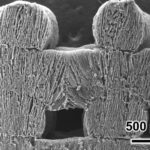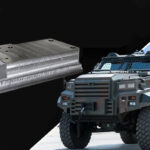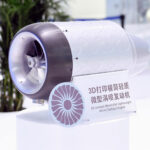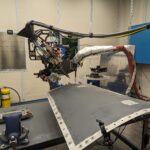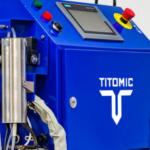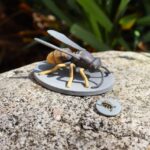Defence giant Honeywell, has recently announced that their 3D printed bearing housing has been approved for use on the Dassault Falcon 20G maritime patrol aircraft.
At last, a 3D printed metal component has received that ultra-prized FAA certification that will permit said component to be used in a flight-critical system.
This is a super exciting development, and one that warrants breaking out the champagne.
Critical What?
First, let us define what a critical component is.
According to FAA’s website, critical parts are:
“those parts that rely upon meeting prescribed integrity requirements to avoid their primary failure, which is likely to result in a hazardous engine effect.”
In other words, if it breaks, the whole engine fails, and you might fall out of the sky.
This definition applies to turbine/compressor shafts, gearbox components, fan blades (have you ever seen a fanblade pierce a housing? There is enough equivalent force acting on the tip of a fanblade as there is in a double decker bus) and other parts which can result in catastrophic failure.
Often, these components have zero redundancy, and are thought of as potential single point failures. That’s why they need to be tested, tested, tested, and tested some more, often costing millions of dollars in development and certification costs.
When critical parts fail…things go badly wrong.
As a result, they must not be of a fail-safe design… but of a safe-life design, meaning there should be close to zero chance of failure during the prescribed lifetime of the component. After that lifetime has elapsed, then the part is simply replaced. There is no need for any kind of maintenance during the lifetime of the part. It should be highly reliable, as close to 100% reliability, give or take a few decimal places.
Bearing Housing
One such part is the bearing housing, which seats the bearing that holds the main shaft on a turbine engine, such as that found on the Dassault Falcon 20G.
The bearing housing resides on the Garrett ATF3 turbofan engine, which is a 3-spool turbofan engine designed by Garrett AiResearch and Honeywell Aerospace.
Each spool requires two main shaft bearings, one being a ball bearing and the other being a roller bearing. The additive manufactured bearings are the #4-5 bearings.
Sadly, Honeywell has not released any clear pictures of the 3D printed component, which isn’t really surprising given how much it likely cost to develop. You can see a cutaway of the engine below. The bearings are located at various positions of the shaft/spools.

Printing a Bearing Housing
So why print a bearing housing?
In this case, the benefits are two-fold.
The ATF3 engine is pretty old. It’s been around since the 1960s, so there are supply chain issues with some of these dated components.
“Though there aren’t many in service, Honeywell is responsible for supporting and maintaining these engines. We had to find a way to address these supply chain issues and keep these aircraft flying,” said Jon Hobgood, vice president of manufacturing engineering, at Honeywell Aerospace.
“We were able to use our expertise in additive manufacturing to produce the qualified part much faster, reducing our lead time from approximately two years to two weeks.”
And there lies the second benefit. A reduction from 2 years down to just 2 weeks lead time is pretty phenomenal.
So the part is certified…what is next?
It has been installed in one aircraft already, and Honeywell are planning to print dozens of these by the end of the year.
After that, who knows what is next? 3D printed main shafts? Compressor blades? They may be a while yet, as there are phenomenal amounts of torque and torsion acting on these parts.
And compressor/turbine blades tend to be manufactured from monocrystaline structures to reduce the chance of crack propagation in the part. Very expensive, very time consuming. And potentially the Holy Grail of aviation additive manufacturing? Could be.
But, the cat is most certainly out of the bag now regarding AM critical parts. There is no turning back.
And we will absolutely bring you updates when the next critical component is manufactured, whatever it may be.



